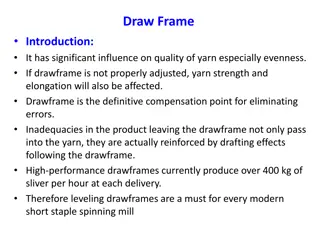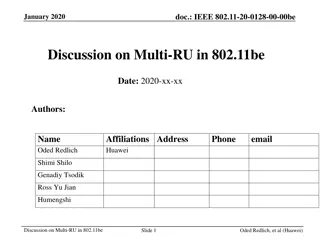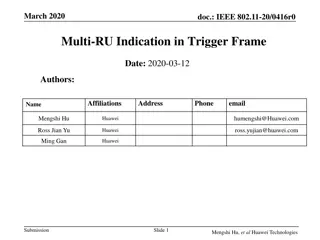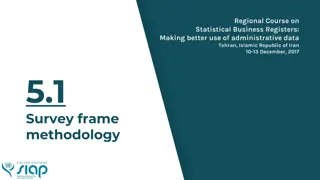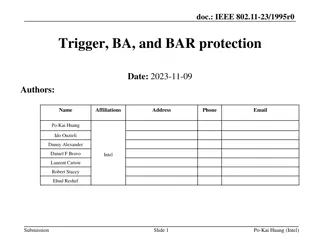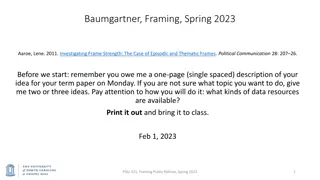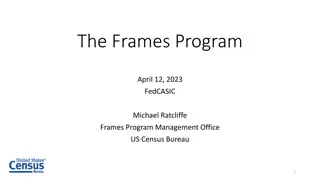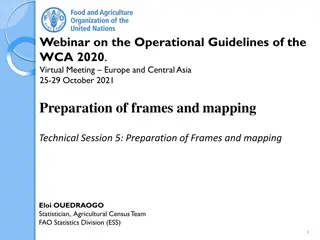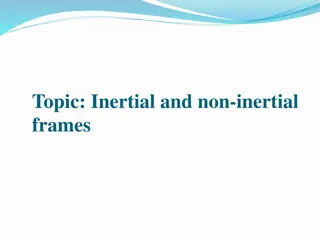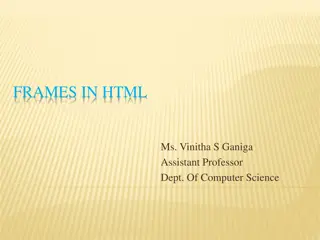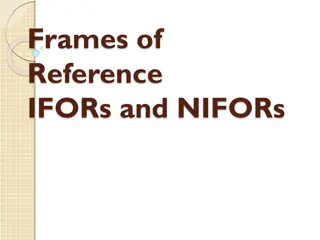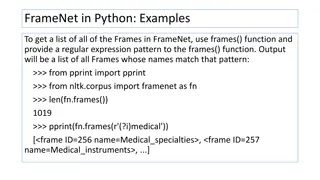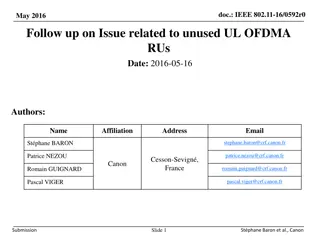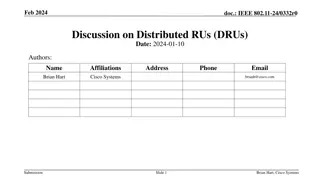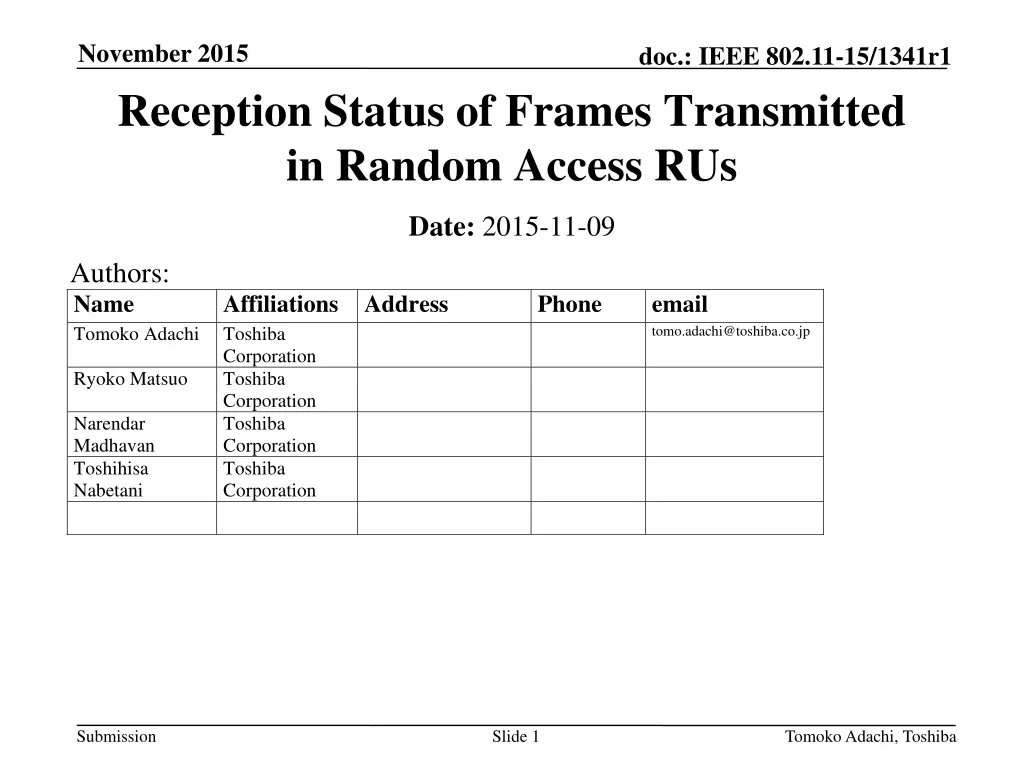
Reception Status of Frames Transmitted in UL OFDMA-Based Random Access RUs
Explore the reception status of UL frames transmitted in UL OFDMA-based random access in IEEE 802.11-15/1341r1. The presentation discusses details like STA initialization, OBO countdown, DL response, CWO selection, and more, providing insights into successful and failed transmissions.
Download Presentation

Please find below an Image/Link to download the presentation.
The content on the website is provided AS IS for your information and personal use only. It may not be sold, licensed, or shared on other websites without obtaining consent from the author. If you encounter any issues during the download, it is possible that the publisher has removed the file from their server.
You are allowed to download the files provided on this website for personal or commercial use, subject to the condition that they are used lawfully. All files are the property of their respective owners.
The content on the website is provided AS IS for your information and personal use only. It may not be sold, licensed, or shared on other websites without obtaining consent from the author.
E N D
Presentation Transcript
November 2015 Reception Status of Frames Transmitted in Random Access RUs doc.: IEEE 802.11-15/1341r1 Date: 2015-11-09 Authors: Name Tomoko Adachi Affiliations Address Toshiba Corporation Toshiba Corporation Toshiba Corporation Toshiba Corporation Phone email tomo.adachi@toshiba.co.jp Ryoko Matsuo Narendar Madhavan Toshihisa Nabetani Submission Slide 1 Tomoko Adachi, Toshiba
November 2015 doc.: IEEE 802.11-15/1341r1 Abstract This presentation considers the reception status of UL frames transmitted in UL OFDMA-based random access. Submission Slide 2 Tomoko Adachi, Toshiba
November 2015 doc.: IEEE 802.11-15/1341r1 UL OFDMA-based random access The detailed concept was presented in [1] and incorporated in [2]. An STA initializes its OBO to a random value in the range 0 to CWO. OBO is counted down equal to the number of random access RUs and when it becomes 0, the STA gets the right to access one of the random access RUs in the current TF-R. Submission Slide 3 Tomoko Adachi, Toshiba
November 2015 doc.: IEEE 802.11-15/1341r1 Discussion Points (1) DL Rsp Packet loss due to not only channel condition but also collision may occur by STAs selecting the same RU. For a STA to judge whether its transmission succeeded or not, want a DL response SIFS after its UL transmission. It can be a M-BA (or ACK) or a TF instead by determining new allocations for successful STAs. If it is a TF, the AP immediately needs to determine assignment info in SIFS, while a M-BA (or ACK) can gain processing time. STAs 1-3 get the right to access random access RUs TF-R RU 1 AID X RU 2 AID X RU 3 AID X RU 4 AID 10 RU 5 AID 15 UL-OFDMA DL Rsp STA 3 STA 3 STA 1 STA 2 RU 4 STA 10 RU 5 STA 15 t SIFS STA 3can know it succeeded and STAs 1 and 2 can know they failed by DL Rsp Submission Slide 4 Tomoko Adachi, Toshiba
November 2015 doc.: IEEE 802.11-15/1341r1 Discussion Points (2) CWO selection CWOmin and CWOmax were introduced in [1] but how to select CWO from between them is not clarified. In CSMA/CA, retrying STAs increase CWO. This is to avoid accessing at the same time where number of contending STAs is unknown. All the STAs accessing at the same time will fail unless there is no capture effect. Should it be the same in UL OFDMA- based random access? Situation is a little bit different from CSMA/CA because there may be successful STAs while some fail in the same time frame. CW in CSMA/CA [3] Submission Slide 5 Tomoko Adachi, Toshiba
November 2015 doc.: IEEE 802.11-15/1341r1 Discussion Points (2) CWO selection (cont d) Way of re-selecting CWO Same as CSMA/CA Successful STAs will get unnecessary gain compared to failed STAs. Same CWO for both successful and failed STAs CWO will never be changed at STAs. What is the meaning of setting CWOmin and CWOmax, then? Give priority to failed STAs Can do this by changing CWO selection rule from CSMA/CA case. ex.1: Increase CWO when transmission succeeded. Note: Should take care of the reset condition. ex.2: Decrease CWO when transmission failed. Note: Should take care of the situation where all the transmissions in random access RUs fail and fall into deadlock. Submission Slide 6 Tomoko Adachi, Toshiba
November 2015 doc.: IEEE 802.11-15/1341r1 Summary Reception status of frames transmitted in random access RUs was considered. In order for the STAs to judge whether their transmission succeeded or not, a DL response SIFS after their transmission is necessary. A TF might be used instead of a M-BA/ACK. Considering the situation that there may be STAs that succeeded and failed at the same time, that is different from CSMA/CA, giving priority to failed STAs in re- selecting CWO seems reasonable. Submission Slide 7 Tomoko Adachi, Toshiba
November 2015 doc.: IEEE 802.11-15/1341r1 References [1] 802.11-15/1105r0 UL OFDMA-based Random Access Procedure [2] 802.11-15/0132r9 Specification Framework for TGax [3] IEEE Std 802.11-2012 Submission Slide 8 Tomoko Adachi, Toshiba
November 2015 doc.: IEEE 802.11-15/1341r1 Straw Poll 1 Do you think we should leave the possibility of using a TF as a DL response frame in substitution of a M- BA/ACK in UL-OFDMA random access sequence? Y:N:A = 7:13:26 Submission Slide 9 Tomoko Adachi, Toshiba
November 2015 doc.: IEEE 802.11-15/1341r1 Straw Poll 2 Do you think we should further consider a mechanism to solve the fairness issue among STAs that transmitted after the same TF-R, when failed STAs increase their CWOs while there are successful STAs not changing their CWOs? Y:N:A = 10:3:35 Submission Slide 10 Tomoko Adachi, Toshiba



